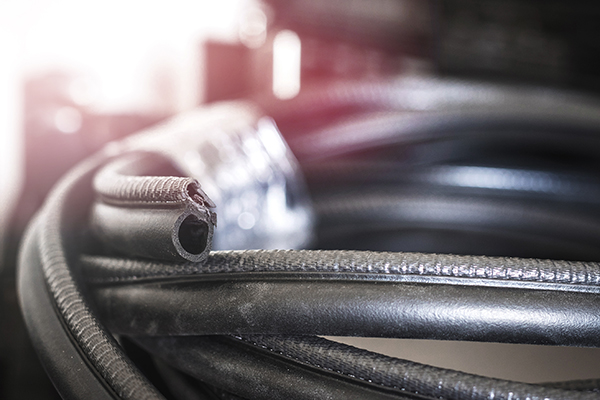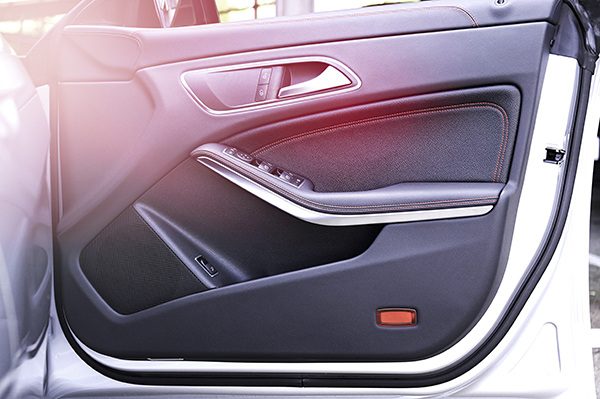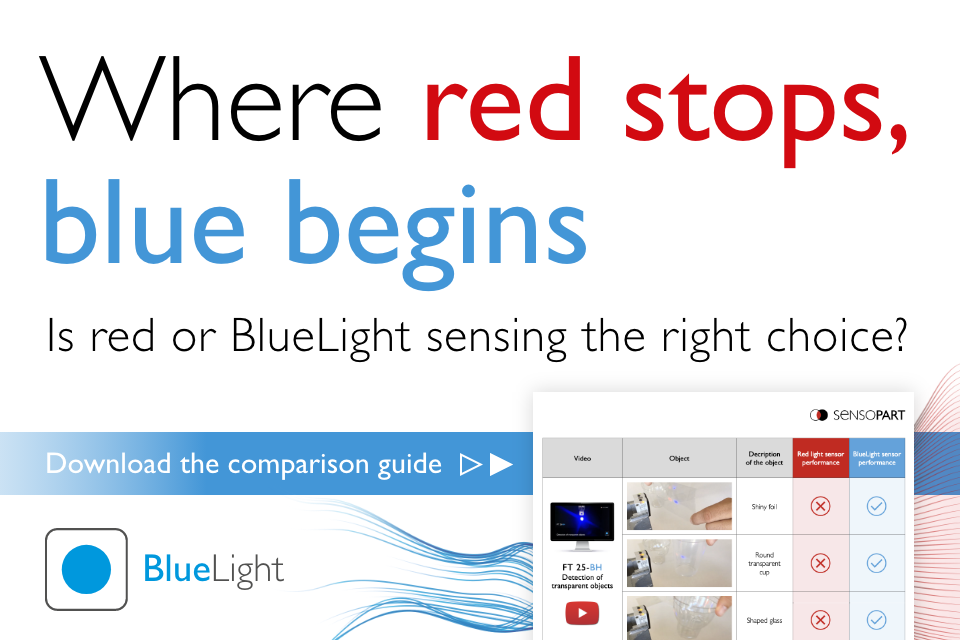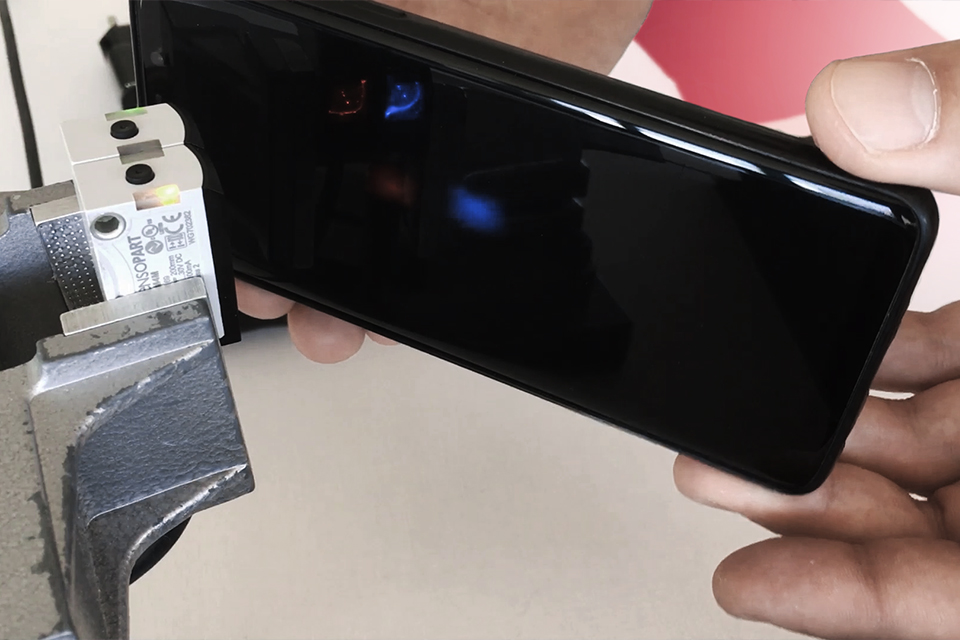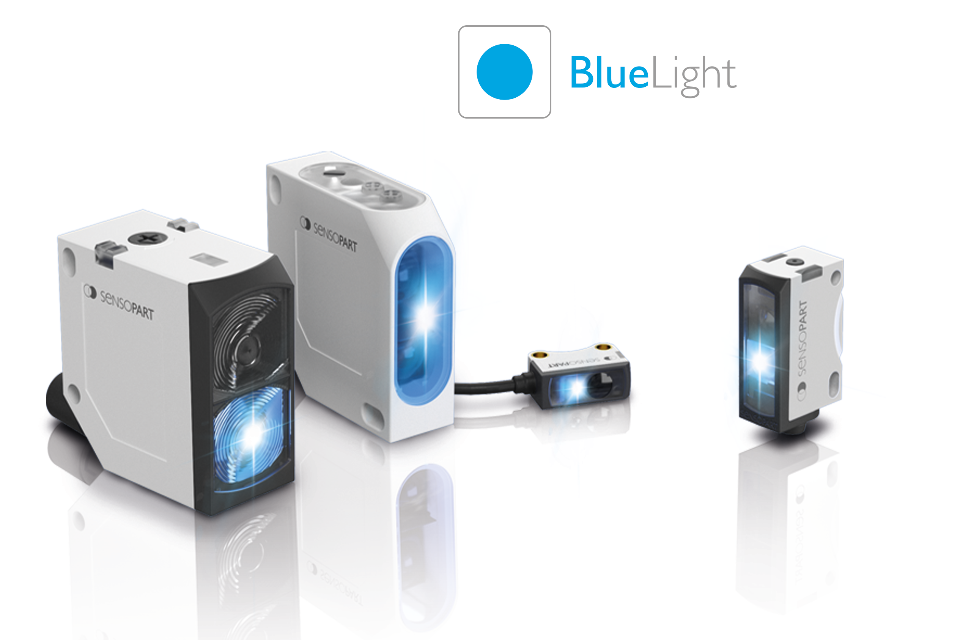BlueLight Application Challenges
BlueLight solves tough application challenges
It is no exaggeration to say that BlueLight technology has dramatically improved the ability to detect dark objects. SensoPart has gone futher by optimizing the transmitting and receiving optics in their BlueLight sensors to achieve even better detection results. Not only are results more reliable and robust but a number of challenges and pain points associated with red light detection have also been solved.
Detecting incomplete clips for car door panels
In automotive engineering, one use for clips is to connect the door side trim to the car door.
If the clips aren't completely assembled, they can create unwanted noise or come loose completely. Therefore, the clips must be checked for completeness. A BlueLight photoelectric diffuse sensor with background suppression enables reliable detection regardless of the clips’ shape, colour and structure. And with the precisely adjustable background suppression, the sensor only detects and switches the desired part of the clip.
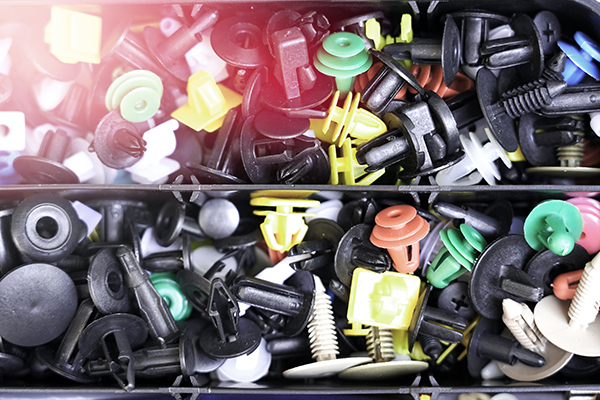
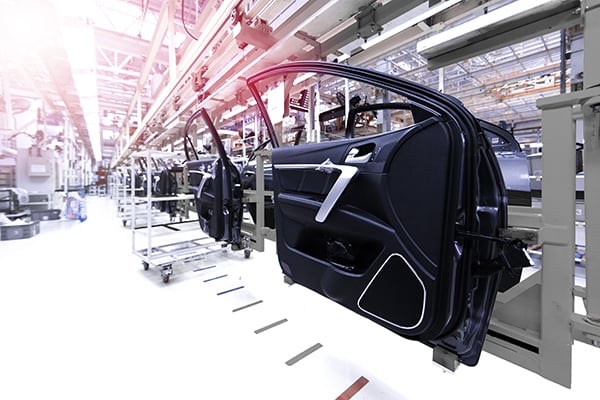
What are your automation application challenges?
Sign-up to our newsletter and see how BlueLight can solve them.
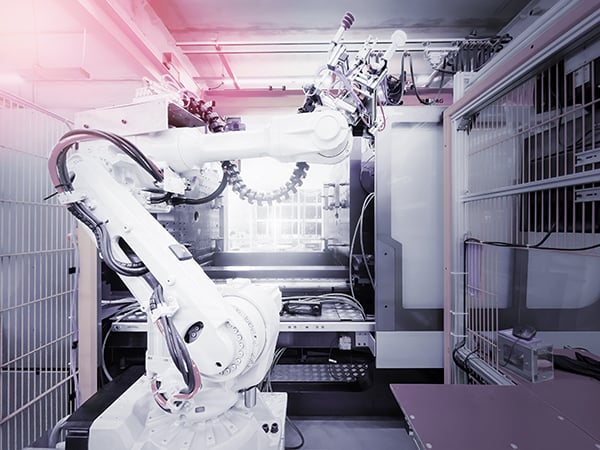
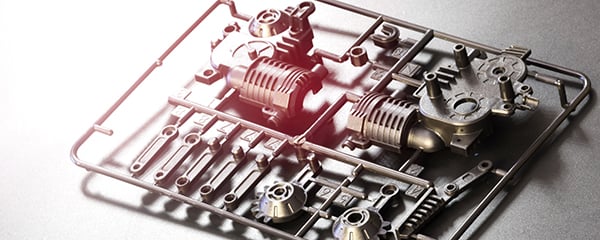
Detection of flawed parts during injection moulding
When producing dark plastic parts using injection moulding, some parts can be under-formed or even not moulded at all. In order to remove these rejected parts, an optical sensor would need to reliably detect dark and deep black objects. With a BlueLight photoelectric diffuse sensor with background suppression, reliability can be greatly increased in detecting these strongly light-absorbing objects. Limited installation space is no challenge because its compact, robust housing is perfectly suited for use directly in the robot gripper.
Detecting dark objects on a moving conveyor belt
The manufacture of a car door includes the use of various dark and shiny door seals. In order to ensure these seals are correctly positioned, they are passed over a conveyor belt. During transport, the end of the seal must be detected so that it can be positioned correctly. Thanks to background suppression, a photoelectric diffuse sensor with blue light reliably detects these dark objects and sends a signal to the conveyor belt to stop the seal at the correct position so the part can smoothly pass through the next production step.
